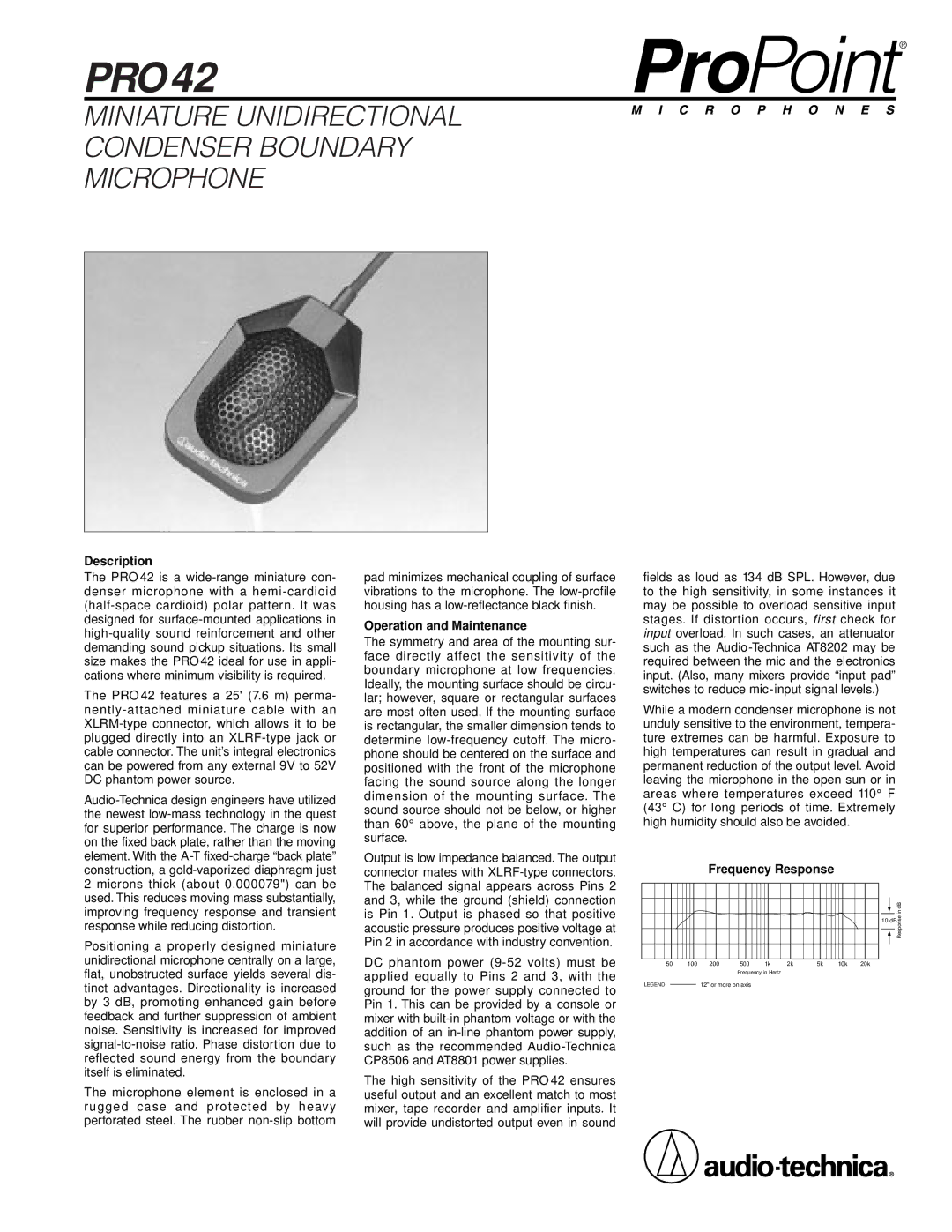Pro42 specifications
The Audio-Technica Pro42 is a robust and versatile microphone designed to meet the demands of both professional and amateur audio applications. Renowned for its exceptional performance, the Pro42 is particularly well-suited for capturing high-quality sound in various environments, making it a popular choice among music producers, sound engineers, and content creators.One of the standout features of the Pro42 is its condenser capsule, which allows it to capture a wide frequency response ranging from 20 Hz to 20 kHz. This broad range ensures that even the subtlest nuances of sound are recorded, making it ideal for studio recordings, live performances, and video productions. The microphone is engineered with a cardioid polar pattern, effectively focusing on the sound source in front of it while minimizing background noise from the sides and rear. This characteristic enhances its ability to deliver clear and vibrant audio, particularly in noisy environments.
The Pro42 also boasts a low self-noise level, ensuring that recordings maintain clarity and detail without unwanted hiss or distortion. This feature is especially beneficial when capturing quiet sound sources, such as vocals or acoustic instruments, as it allows for a more dynamic range and a closer representation of the original sound. Additionally, the microphone supports high SPL (Sound Pressure Level) handling, making it capable of capturing loud sounds without distortion, which is essential for live audio applications and amplified instruments.
Another key aspect of the Pro42 is its durable construction. Built with a rugged metal housing, it is designed to withstand the rigors of frequent use in both studio and field settings. This durability does not compromise the microphone’s performance, as it continues to deliver consistent audio quality under various conditions.
The Pro42 also features a switchable high-pass filter, allowing users to eliminate low-frequency noise such as handling noise or air conditioning hum, further enhancing the clarity of recordings. Its versatility extends to compatibility with various audio interfaces and mixers, making it an ideal choice for a range of setups.
In conclusion, the Audio-Technica Pro42 microphone stands out for its exceptional sound quality, durability, and versatility. With its wide frequency response, low self-noise, robust construction, and the ability to handle high SPL, it is an excellent choice for anyone looking to achieve professional sound in a variety of audio applications.

